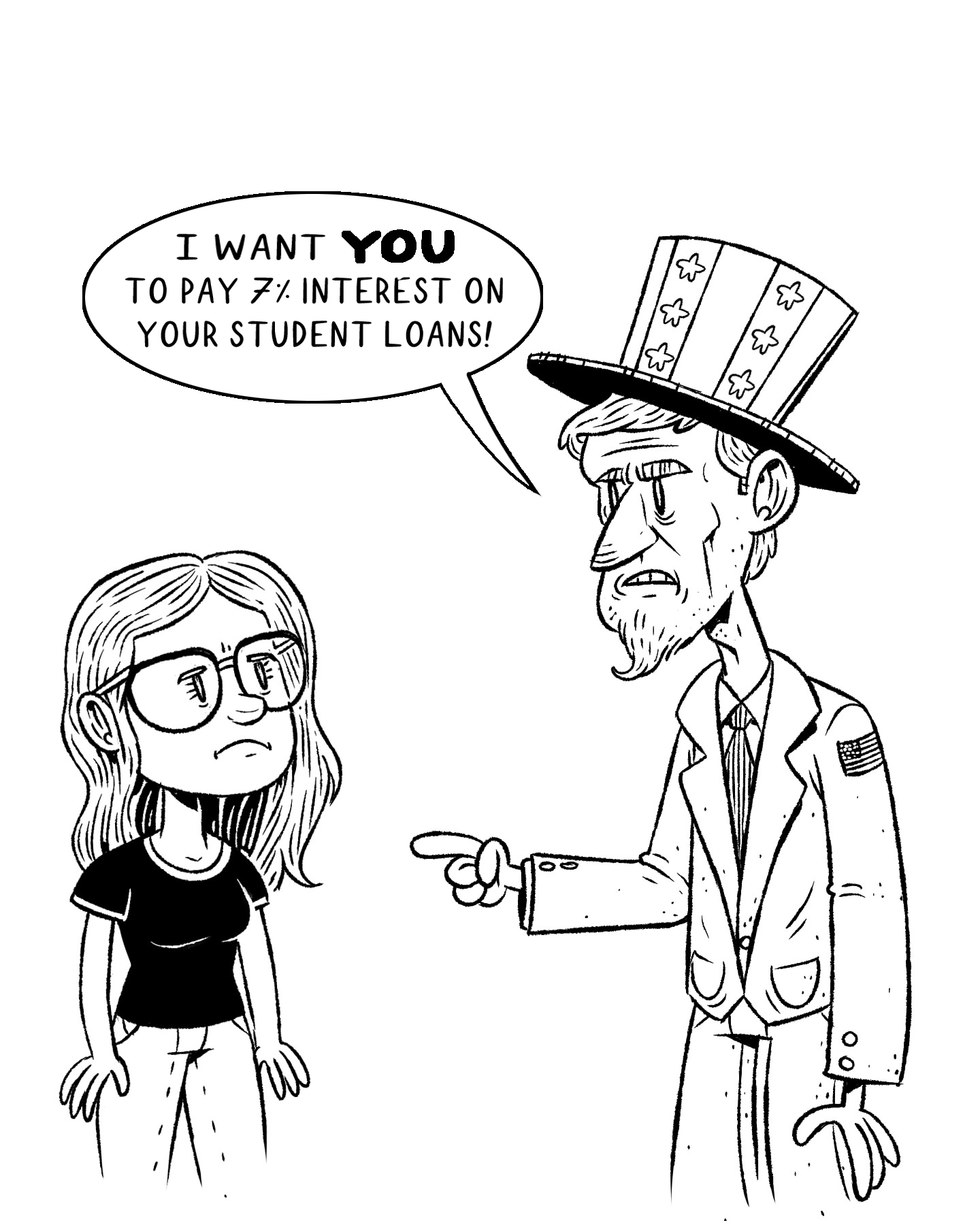Excerpts from Confessions of an Old Man
 “Washington borrows at 2 percent and charges students 7 percent in interest”
“Washington borrows at 2 percent and charges students 7 percent in interest”
February 22, 2020 – The federal government has been profiting from student debt earning $66 billion on loans originated from 2007 to 2012, according to Senator Elizabeth Warren. The profits could be as high as $185 billion on new student loans made over the next ten years. According to the US Department of Education, the federal government charged interest rates from 4.45 to 7 percent on student loans in fiscal year 2017–18. At the same time, SoFi, a private company, offers student loans as low as 3.25 percent. The federal government uses a ten-year bond issued by the US Treasury as a benchmark for its cost, which was about 2.4 percent in 2017. It appears that Uncle Sam is even worse than the Wall Street banks when it comes to making profits from student loans.
To help students attend college, Congress passed the Higher Education Act of 1965. It guaranteed student loans against defaults, promised certain interest rates to the banks, and paid fees to banks for the administration and collection of student loans. Later on, the federal government decided to provide student loans directly instead of going through financial institutions. The Direct Loan (DL) Program began its operation in the academic year 1994–95. Under this program, the federal government provides the capital and loan servicing, and the loans are originated by colleges and universities. By July 2010, the program accounted for 100 percent of new student loans—a government-controlled student loan program. One of the shortcomings of student loans through the federal government is having virtually no option to refinance the high interest rates. This option has been commonly available for other types of loans in the private sector but not for student loans from the government. Lowering student loan rates to match the cost to the federal government could put its profits into students’ pockets and help grow the economy.
According to a Pew Research Center study, student loans amounted to more than $1.3 trillion as of June 2017, which is more than two and a half times that of a decade ago. Every year, about one million out of forty-four million Americans default on their student loans. In cases of default, the federal government can garnish people’s wages, Social Security checks, or even disability benefits. If you take out the forty-four million Americans who have student loans and cannot participate in the economy, it is easy to see why the American economy is not growing to its potential. About 70 percent of students will graduate with an average loan balance of about $37,000. Some of the casualties of student debt are housing, consumer spending, and household formation.
The concept behind government programs that lend money to students as part of the development of human capital makes a lot of sense. Historically, most of the student loan programs were developed based on the students’ prospective abilities to pay. The idea was that upon completion of college, students would be able to enhance their earnings and thus would be able to pay back their loans. However, with the Parent Plus loan program, this concept is reversed. The program holds parents responsible for paying back the loans, whether or not their sons or daughters graduate. The parents, as they get closer to retirement, may see their wages or Social Security checks garnished in the case of a default on the loan.
One can argue that student loans are predatory lending programs—something that is considered illegal. The first reason is that a student may not graduate and may not be able to pay back the loan. Second, under the Parent Plus program, that burden falls on parents, who may not be able to pay the loans as they get closer to retirement, have health issues, or become unemployed. Lending without the borrower’s ability to pay is considered predatory lending. In early 2017, the Consumer Financial Protection Bureau (CFPB), along with some state attorney generals, filed a lawsuit against Navient, one of the largest student loan providers and servicers in the country. Navient was accused of pushing borrowers into inadvisable borrowing practices and profiting from private loans that were designed to fail. It appears as if the federal government’s student loan program falls into the same category.
Why is the federal government making profits on student loans?
